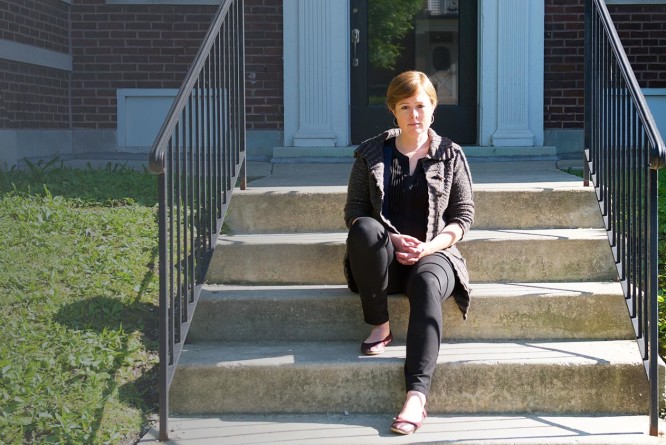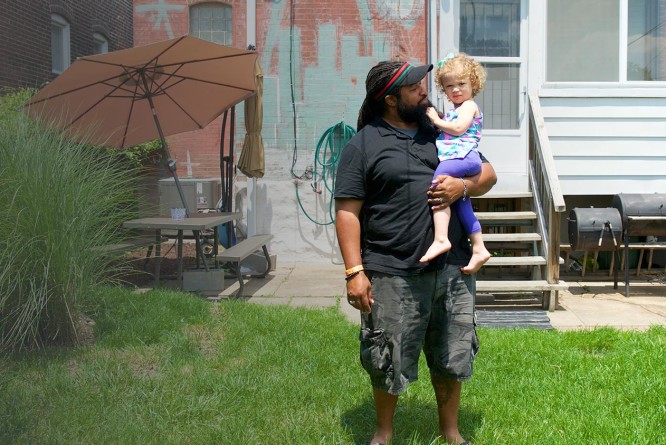Ending Poverty
The expert testimony, research, scholarship, and lived experience collected by the Commission revealed the following:
- Federal Reserve economists conducted an analysis of factors impacting per capita income growth and the growth of metropolitan areas at large for nearly 120 metropolitan areas throughout the U.S. as part of a report for the Fund for Our Economic Future based in Northeast Ohio (Eberts et al., 2006). The researchers identified eight key variables that influence economic growth on the regional level, including a region’s skilled workforce, active small businesses, ethnic diversity and minority business ownership, level of racial inclusion, costs associated with a declining industrial base, income inequality (measured by income disparity and number of children living in poverty), quality of life variables (including universities, recreation, and transportation), and concentrated poverty in core cities (Eberts et al., 2006).
- In 2013, Missouri had a population of 6,021,988 of which 947,792 were at 100% or below of the Federal Poverty Level (Missourians to End Poverty Coalition, 2014). Of those, roughly half, or 417,151, lived in extreme poverty defined as 50% or less than the Federal Poverty Level (Missourians to End Poverty Coalition, 2014).
- A recent study by the National Low Income Housing Coalition recently found that the average hourly wage necessary to afford a basic two-bedroom apartment in St. Louis is $15.69 (Bolton et al., 2015). This value was calculated based on HUD’s estimated Fair Market Rent (FMR) and the idea that a family or individual would not spend more than 30% of their income on housing costs (Bolton et al., 2015).
- MIT’s Living Wage Calculator “draws on geographically specific expenditure data related to a family’s likely minimum food, child care, health insurance, housing, transportation, and other basic necessities (e.g. clothing, personal care items, etc.) costs to determine the minimum employment earnings necessary to meet a family’s basic needs while also maintaining self-sufficiency” (Glasmeier et al., 2014). It shows that, in St. Louis City, the living hourly wage for one adult to support him/herself is $9.94. For a family of one adult and one child, the living wage rises to $20.55 (Glasmeier et al., 2015). Researchers suggest that “in many American communities, families working in low-wage jobs make insufficient income to live locally given the local cost of living” (Glasmeier et al., 2014).
- Debate exists over the short- and long-term economic implications of raising the minimum wage. However, a group of economists, in a written statement to the U.S. House of Representatives, suggested that a well-designed phase-in process for a higher minimum wage would allow businesses to absorb labor cost increases through modest increases in prices and productivity while also permitting low-wage workers to receive a slightly larger share of the business’ total revenue (U.S. House of Representatives, 2015). The economists stated:“On average, in the United States, even fast-food restaurants, which employ a disproportionate share of minimum wage workers, are likely to see their overall business costs increase by only about 2.8 percent per year” (U.S House of Representatives, 2015).
- The Earned Income Tax Credit (EITC) is a refundable tax credit for low- to moderate-income working individuals and couples; the amount of benefit depends on the recipient’s income and number of children (Flores, 2015). As suggested by the Missouri Budget Project, EITCs encourage people to work, enhance take-home pay, and improve health and economic and educational outcomes (Center on Budget and Policy Priorities, 2014). If implemented in Missouri, the EITC could benefit approximately 500,000 families (Missouri Budget Project, 2015).
- The Child Tax Credit (CTC) is a tax credit designed for low- to moderate- income families to offset the cost of raising children. The tax credit is worth up to $1,000 per eligible child, and is adjusted by income for individuals with qualifying children under the age of 17 (Center on Budget and Policy Priorities, 2014).
- The Center on Budget and Policy Priorities notes that in 2012, the EITC lifted 6.7 million people (including 3.4 million children) above the poverty line, while the CTC lifted 2.7 million people (including 1.4 million children) above the poverty line. (Sherman & Trisi, 2015). Research by the Center on Budget and Policy Priorities also noted:In 2013, the CTC lifted approximately 3.1 million people out of poverty, including about 1.7 million children (Center on Budget and Policy Priorities, 2014).
- As delineated by the Federal Deposit Insurance Corporation:“Payday loans are small-dollar, short-term, unsecured loans that borrowers promise to repay out of their next paycheck or regular income payment… Because these loans have such short terms to maturity, the cost of borrowing, expressed as an annual percentage rate, can range from 300 percent to 1,000 percent, or more” (Federal Deposit Insurance Corporation, 2003).
- Low-income households in Missouri with limited access to credit might seek payday loans to handle increased expenditures. However, payday lending firms can impose abusive loan terms on a borrower, convincing the borrower to accept unfair terms that a borrower does not need, does not want, or cannot afford (Center for Responsible Lending).
- During 2008, 2.8 million payday loans were made by 1,275 lenders licensed in Missouri, according to the Missouri Division of Finance (Teuscher, 2009). In their “Poverty at Issue” research report, University of Missouri researchers note that “there are over twice as many payday loan stores in Missouri as there are McDonald’s restaurants and Starbucks combined” (University of Missouri, 2012).
- Compared to the surrounding eight states, Missouri has:
- The highest average annual percentage rates (APRs) of interest [at an average of 445% APR in 2011]
- The second most payday lenders (Tennessee is ranked higher)
- Is the only state to allow loan renewals (University of Missouri, 2012).
- In Missouri, nearly 50% of payday loan borrowers eventually defaulted on a loan, even after they had paid over 90% of the loan amount in fees alone (University of Missouri, 2012). Once a borrower defaulted, no matter whether the fees or interest they had paid over time exceeded the original loan amount, the borrower was subject to bounced check fees and aggressive debt collection tactics by the payday lender, in addition to overdraft fees from the bank (University of Missouri, 2012).
These findings prompted the Commission to draft several calls to action for changes to economic policy to help bring individuals and families out of poverty.
To that end, the Commission issues the calls to action found below.
Take Action
Support increased access to care
Contact your local state legislator to express your support for Medicaid expansion. Join local or state advocacy organizations to get involved.
Invest in a child’s future
Make a financial investment in a child’s savings account.
Suggested Reading List
Glasmeier, A, Nadeau, C., and Schultheis, E. (2015). Living Wage Calculation for St. Louis County, Missouri. Massachusetts Institute of Technology. Retrieved from:https://livingwage.mit.edu/counties/29189
Citations
- Bolton, M., Bravve, E., Miller, E., Crowley, S., and Errico, E. (2015). Out of Reach 2015. National Low Income Housing Coalition. Retrieved from:https://nlihc.org/sites/default/files/oor/OOR_2015_FULL.pdf
- Center for Responsible Lending. Payday Lending:How the Debt Trap Captures Borrowers. Retrieved from:https://www.responsiblelending.org/payday-lending/tools-resources/debttrap.html?referrer=https://www.google.com/
- Center on Budget and Policy Priorities (2014). Policy Basics:The Child Tax Credit. Retrieved from:https://www.cbpp.org//sites/default/files/atoms/files/policybasics-ctc.pdf
- Center on Budget and Policy Priorities. (2015). Policy Basics:The Earned Income Tax Credit. Retrieved from:https://www.cbpp.org/research/federal-tax/policy-basics-the-earned-income-tax-credit
- Eberts, R., Erickcek, G., & Kleinhenz, J. (2006). Dashboard Indicators for the Northeast Ohio Economy:Prepared for the Fund for Our economic Future, Working Paper 06-05. Cleveland:The Federal Reserve Bank of Cleveland. Retrieved from:https://chicago.ssrn.com/delivery.php?ID=509005100118097008031116105000091101062011084076070069105105085101121102072090004104001126060041109056096075065096010080085007029022075093060109005005002072081088052035024090085097082065007024111005099070030007106004100026126094064012010068114089025&EXT=pdf
- Federal Deposit Insurance Corporation. (2003). An Update on Emerging Issues in Banking:Payday Lending. Retrieved from:https://www.fdic.gov/bank/analytical/fyi/2003/012903fyi.html
- Flores, Q. (2015). Tax Credits for Working Families:Earned Income Tax Credit (EITC). National Conference of State Legislatures. Retrieved from:https://www.ncsl.org/research/labor-and-employment/earned-income-tax-credits-for-working-families.aspx
- Glasmeier, A, Nadeau, C., and Schultheis, E. (2015). Living Wage Calculation for St. Louis County, Missouri. Massachusetts Institute of Technology. Retrieved from https://livingwage.mit.edu/counties/29189
- Glasmeier, A., Nadeau, C., and Schultheis, E. (2014). Living Wage Calculator:User’s Guide / Technical Notes. Massachusetts Institute of Technology:Department of Urban Studies and Planning. Retrieved from:https://livingwage.mit.edu/resources/Living-User-Guide-and-Technical-Notes-2014.pdf
- McCaulley, G. (2012). Show-Me Predatory Lending:Where Does the Money Go? Poverty At Issue Research Report. University of Missouri Extension. Retrieved from https://extension.missouri.edu/cfe/wcap/Show-MePredatoryLendingReport.pdf
- Missouri Budget Project. (2015). Earned Income Tax Credits:Targeted tax credits with significant impact. Retrieved from:https://www.mobudget.org/wp-content/uploads/2015/02/EITC-February-2015.pdf
- Missourians to End Poverty Coalition. (2014). State of the state of poverty in Missouri. Retrieved from:https://www.caastlc.org/pdf/2014Poverty%20ReporteRSRKp.pdf
- Sherman, A. and Trisi, D. (2015). Safety net more effective against poverty than previously thought:Correcting for underreporting of benefits reveals stronger reductions in poverty and deep poverty in all states. Center on Budget and Policy Priorities. Retrieved from:https://www.cbpp.org/research/poverty-and-inequality/safety-net-more-effective-against-poverty-than-previously-thought
- Teuscher, R. (2009). The payday loan industry in Missouri:A study of the laws, the lenders, the borrowers and the legislation. BBB Serving Eastern Missouri and Southern Illinois-Executive summary. Retrieved from:https://www.bbb.org/Storage/142/Documents/PaydayLoanReport09color.pdf
- U.S. House of Representatives. (2015). Economists in support of a $15 minimum wage as of 2020. Retrieved from:https://ellison.house.gov/sites/ellison.house.gov/files/wysiwyg_uploaded/Minimum%20wage_Economistsletter.pdf



#FwdThruFerguson